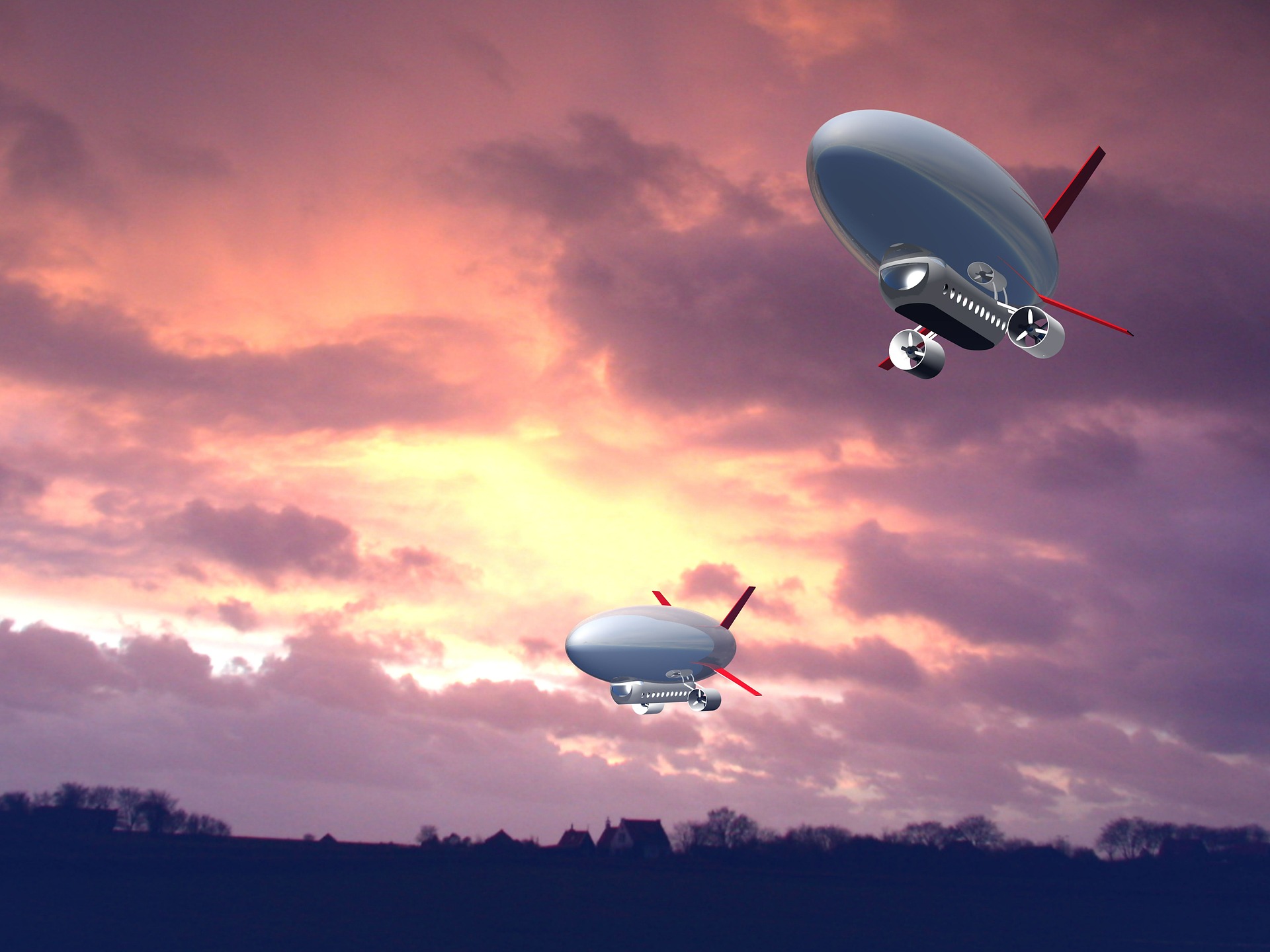How Many Blimps In The World? A Fascinating Dive Into The Sky Giants
Let’s talk about blimps. Yep, those massive floating wonders cruising silently above stadiums, events, and cities around the globe. If you’ve ever wondered how many blimps are out there or what makes these airships so special, you’re in the right place. Today, we’re diving deep into the world of blimps—exploring their history, numbers, and why they still captivate our imagination.
Blimps might seem like relics from a bygone era, but trust me, they’re still relevant. These helium-filled giants aren’t just for advertising anymore; they play crucial roles in surveillance, research, and even eco-friendly transportation. So, whether you’re a tech enthusiast, aviation geek, or just someone who loves cool stuff, this article’s got you covered.
Now, before we get into the nitty-gritty of blimp statistics, let me set the stage. Blimps have been around since the early 1900s, but their evolution has been nothing short of remarkable. From military use during World War II to modern-day aerial photography, these floating machines continue to evolve. Ready to learn more? Let’s go!
Read also:Verona Moose Lodge Upcoming Events Your Ultimate Guide To Fun And Adventure
Why Counting Blimps Matters
Ever tried counting stars? Now imagine trying to count blimps. It’s not exactly an easy task, but it’s important. Understanding how many blimps exist worldwide gives us insight into their role in global industries. Plus, it’s kinda cool to know how many of these sky whales are floating above us.
Here’s the deal: counting blimps involves looking at several factors. Are we talking about commercial blimps, military ones, or experimental prototypes? Each category adds a layer of complexity. But don’t worry—we’ll break it down for you.
How Many Blimps Are There Globally?
According to recent estimates, there are roughly 50-60 operational blimps worldwide. That number might seem small compared to airplanes or drones, but remember, blimps aren’t exactly mass-produced. Building one requires specialized knowledge, resources, and technology.
But wait—what about inactive or retired blimps? Those numbers can vary depending on who’s counting. Some sources suggest there could be hundreds of blimps in storage or mothballed status. For now, though, we’ll focus on the active fleet.
The History of Blimps: From Zeppelins to Modern Airships
To truly understand blimps, we need to look back at their origins. The first blimps appeared in the late 19th century, inspired by German inventor Count Ferdinand von Zeppelin. Back then, they were called “dirigibles” or “airships.” Over time, the term “blimp” stuck, thanks to its softer, more flexible design.
During World War I and II, blimps played a critical role in naval patrols and anti-submarine warfare. After the wars, their popularity declined, but they found new life as advertising tools. Fast-forward to today, and blimps are used for everything from sports coverage to scientific research.
Read also:Unveiling The Allure Exploring The World Of Sexy Movie Hd Videos
Key Milestones in Blimp History
- 1852: The first powered airship flight by Henri Giffard in France.
- 1900: Count Ferdinand von Zeppelin builds the first rigid airship.
- 1937: The infamous Hindenburg disaster leads to a decline in airship popularity.
- 1940s: Blimps become essential for U.S. Navy patrols during WWII.
- 2000s: Modern blimps emerge with advanced materials and technology.
Types of Blimps: Not All Are Created Equal
Not all blimps are the same. There are different types, each designed for specific purposes. Here’s a quick rundown:
Commercial Blimps
These are the ones you see at football games or concerts. Companies like Goodyear and MetLife use blimps for branding and marketing. They’re equipped with bright lights, cameras, and even Wi-Fi for live streaming.
Military Blimps
Military blimps are built for surveillance and reconnaissance. They can stay airborne for hours, providing real-time data to ground troops. Countries like the U.S., Israel, and Russia rely on them for border security and disaster response.
Experimental Blimps
This category includes blimps designed for scientific research or eco-friendly transportation. For example, some companies are testing blimps as alternatives to cargo planes, aiming to reduce carbon emissions.
How Blimps Work: The Science Behind the Float
So, how do blimps stay up there without engines? It’s all about buoyancy. Blimps are filled with helium, a gas lighter than air. When the helium expands, it creates lift, allowing the blimp to rise. Pilots control altitude using ballonets—internal balloons that adjust the air pressure inside the blimp.
Propellers provide forward motion, while rudders steer the craft left or right. It’s a delicate balance, but skilled pilots make it look effortless. And unlike airplanes, blimps don’t need runways—they can land almost anywhere!
Top Countries with the Most Blimps
Not every country has blimps, but some have more than others. Here’s a list of the top countries leading the pack:
United States
As the birthplace of modern blimps, the U.S. leads the way with the largest fleet. Companies like Goodyear, Lockheed Martin, and Raven Industries are at the forefront of blimp technology.
Germany
Germany’s legacy in airship engineering continues today. Companies like Zeppelin NT produce cutting-edge blimps for commercial and scientific purposes.
Russia
Russia uses blimps primarily for military applications, such as monitoring pipelines and detecting intruders along its vast borders.
Israel
Israel has developed advanced blimp technology for defense and homeland security. Their blimps are equipped with high-tech sensors and cameras.
Challenges Facing the Blimp Industry
Despite their advantages, blimps face several challenges. High costs, limited speed, and weather sensitivity are just a few obstacles. Additionally, public perception of blimps as “old-fashioned” can hinder investment in new projects.
However, innovators are working hard to overcome these hurdles. New materials, propulsion systems, and AI-driven navigation promise to revolutionize the industry. Who knows—blimps might soon become a common sight in our skies!
Future of Blimps: What’s Next?
The future of blimps looks bright. As the world seeks sustainable solutions, blimps offer a promising alternative to traditional aviation. Here are a few trends to watch:
- Eco-friendly designs: Blimps powered by solar panels and hydrogen fuel cells are on the horizon.
- Advanced materials: Lightweight, durable fabrics will make blimps stronger and more efficient.
- Autonomous flight: Drones and blimps are converging, with some companies developing unmanned blimps for cargo delivery.
Fun Facts About Blimps
Before we wrap up, here are some fun facts about blimps:
- The Goodyear Blimp is one of the most recognizable blimps in the world, having appeared in countless TV shows and movies.
- Blimps can stay airborne for up to 24 hours, making them ideal for long-duration missions.
- Helium, the gas used to inflate blimps, is rarer than you might think. Scientists are exploring alternatives like hydrogen, but safety concerns remain.
Conclusion: Why Blimps Matter
So, how many blimps are there in the world? Around 50-60 active ones, give or take. But the real question isn’t about numbers—it’s about impact. Blimps may not dominate the skies like airplanes, but they serve vital roles in industries ranging from entertainment to defense.
As technology advances, blimps will likely become even more important. Whether you’re a fan of aviation history or simply fascinated by these gentle giants, there’s no denying their allure. So next time you see a blimp floating overhead, take a moment to appreciate its journey—from the early days of Zeppelin to the cutting-edge designs of today.
Got questions or comments? Drop them below! And if you enjoyed this article, share it with your friends. Together, let’s keep the blimp dream alive!
Table of Contents
- Why Counting Blimps Matters
- How Many Blimps Are There Globally?
- The History of Blimps: From Zeppelins to Modern Airships
- Types of Blimps: Not All Are Created Equal
- How Blimps Work: The Science Behind the Float
- Top Countries with the Most Blimps
- Challenges Facing the Blimp Industry
- Future of Blimps: What’s Next?
- Fun Facts About Blimps
- Conclusion: Why Blimps Matter


